GUY PEARCE & ERIQ EBOUANEY IN BRIAN DE PALMA'S 'DOMINO'
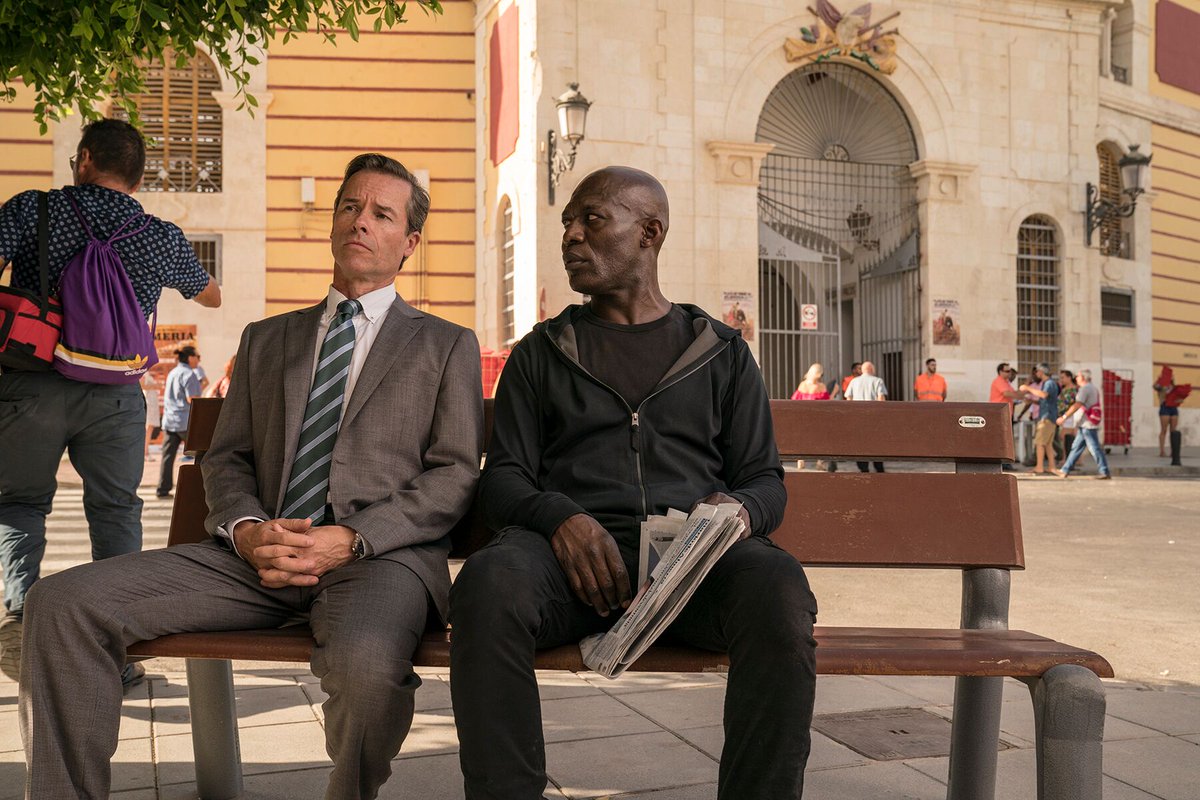
 Hello and welcome to the unofficial Brian De Palma website. Here is the latest news: |
|---|
E-mail
Geoffsongs@aol.com
-------------
Recent Headlines
a la Mod:
Listen to
Donaggio's full score
for Domino online
De Palma/Lehman
rapport at work
in Snakes
De Palma/Lehman
next novel is Terry
De Palma developing
Catch And Kill,
"a horror movie
based on real things
that have happened
in the news"
Supercut video
of De Palma's films
edited by Carl Rodrigue
Washington Post
review of Keesey book
-------------
Exclusive Passion
Interviews:
Brian De Palma
Karoline Herfurth
Leila Rozario
------------
------------
| « | March 2019 | » | ||||
| S | M | T | W | T | F | S |
| 1 | 2 | |||||
| 3 | 4 | 5 | 6 | 7 | 8 | 9 |
| 10 | 11 | 12 | 13 | 14 | 15 | 16 |
| 17 | 18 | 19 | 20 | 21 | 22 | 23 |
| 24 | 25 | 26 | 27 | 28 | 29 | 30 |
| 31 | ||||||
De Palma interviewed
in Paris 2002
De Palma discusses
The Black Dahlia 2006

Enthusiasms...
Alfred Hitchcock
The Master Of Suspense
Sergio Leone
and the Infield
Fly Rule
The Filmmaker Who
Came In From The Cold
Jim Emerson on
Greetings & Hi, Mom!
Scarface: Make Way
For The Bad Guy
Deborah Shelton
Official Web Site
Welcome to the
Offices of Death Records

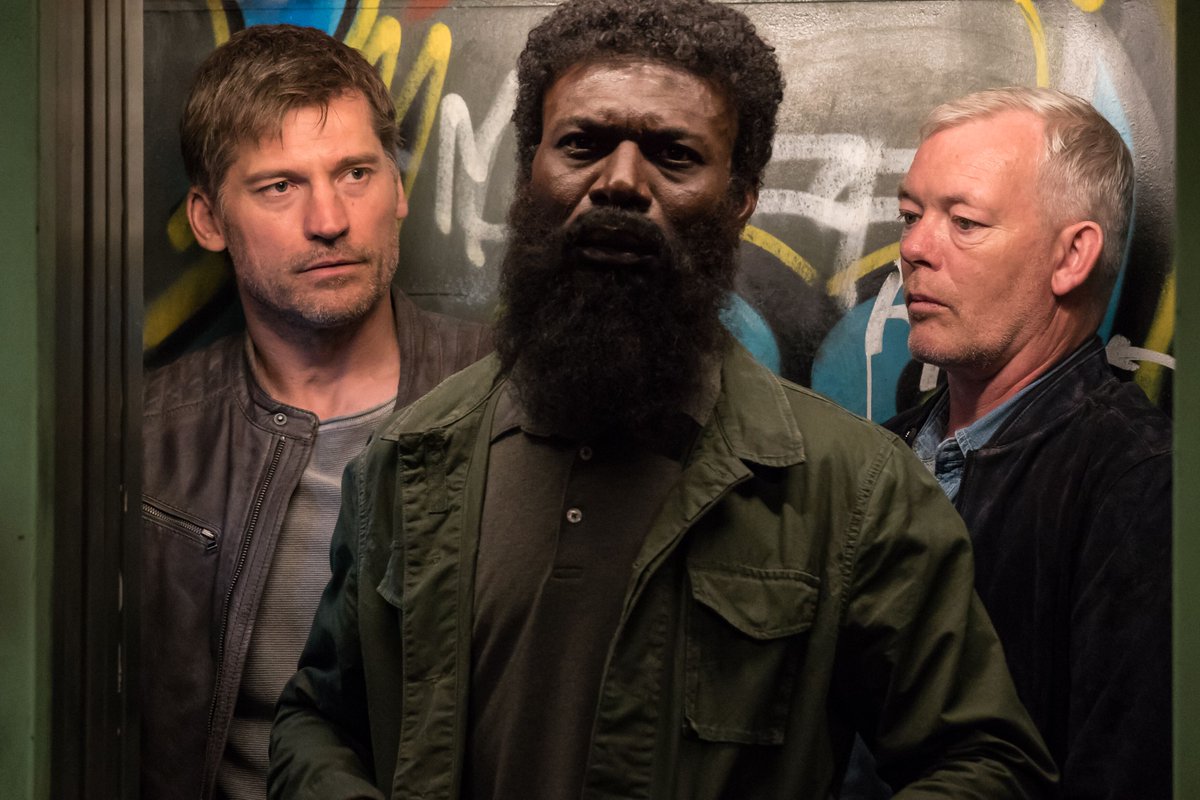
It is interesting to note that the release date follows just six days after the closing ceremonies of this year's Cannes Film Festival-- the full line-up of which has not yet been revealed. May 31 is also 12 days after the series finale of Game Of Thrones will air on HBO-- providing a smooth transition and ample time for Coster-Waldau and Carice van Houten to shift promotional gears.
UPDATE 3/22/19 -We’re not exactly sure what version of "Domino" will be released. Is this the film that De Palma worked on and finished, thus his de facto director’s cut? Or is this the version that the filmmaker washed his hands of, handed to producers, and doesn’t recognize as something he is proud of?
While it is true that De Palma has previously said, "Domino is not my project, I did not write the script," all De Palma means by that is that Domino falls into the same category in his filmography as Scarface, The Untouchables, and The Black Dahlia, among several others-- movies in which he is interpreting someone else's voice on the page with his visual acumen. The quotes Barfield uses are from interviews De Palma did with press in France last June. Last June, I posted about several interviews from France, which clear up the whole non-question about the cut of the film:
June 2, 2018 - Brian De Palma has been asked about Domino several times over the past few days in Paris, and usually ends with some variation of "I have no idea when this movie will be released," such as, "I'll find out when I read it in the papers like everybody else," which is kind of a way of saying it's out of his hands now. In more than one interview, including the one with AFP, he mentioned that filming on Domino was completed just last week:The director did not abandon the cinema. He is currently working on a new feature film, Domino. "I do not know yet when the film will come out, we had a lot of problems with the financing", laments Brian De Palma. But finally, after many starts and stops, "the last stroke of the crank took place last week".
In the interview with Le Parisien's Catherine Balle, De Palma said that while the making of Domino was an awful experience, the film itself is good. "It was a horrible experience," De Palma said. "The film was underfunded, it was far behind, the producer did not stop lying to us and did not pay some of my crew. I don't know at all if this feature will be released." Yet when asked if he likes the movie, De Palma replies, "Yes, it is good." Susan Lehman then adds, "It's very good."Speaking of which, De Palma and Lehman were at the Fnac des Ternes bookstore yesterday, and you can watch the interview from that on YouTube. At one point, De Palma is asked about Domino, and responds, "Oh boy... a very difficult situation. A film that was underfinanced. I was in many hotel rooms waiting for the money so that we could continue shooting. I was in many fabulous cities, waiting in hotel rooms. I was here a hundred days in Europe, and shot thirty. However, somehow we managed to make a movie out of this completely chaotic production situation, and hopefully you'll be seeing it in your local cinemas sometime in the future."
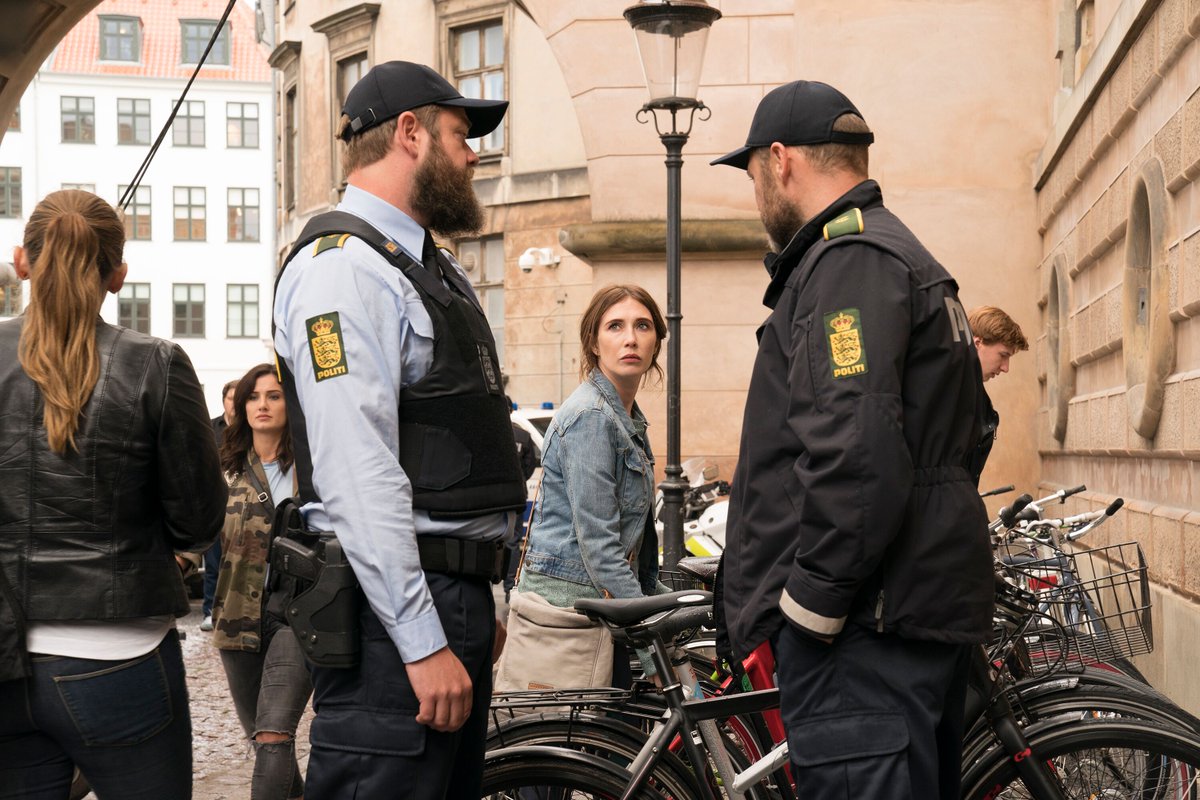
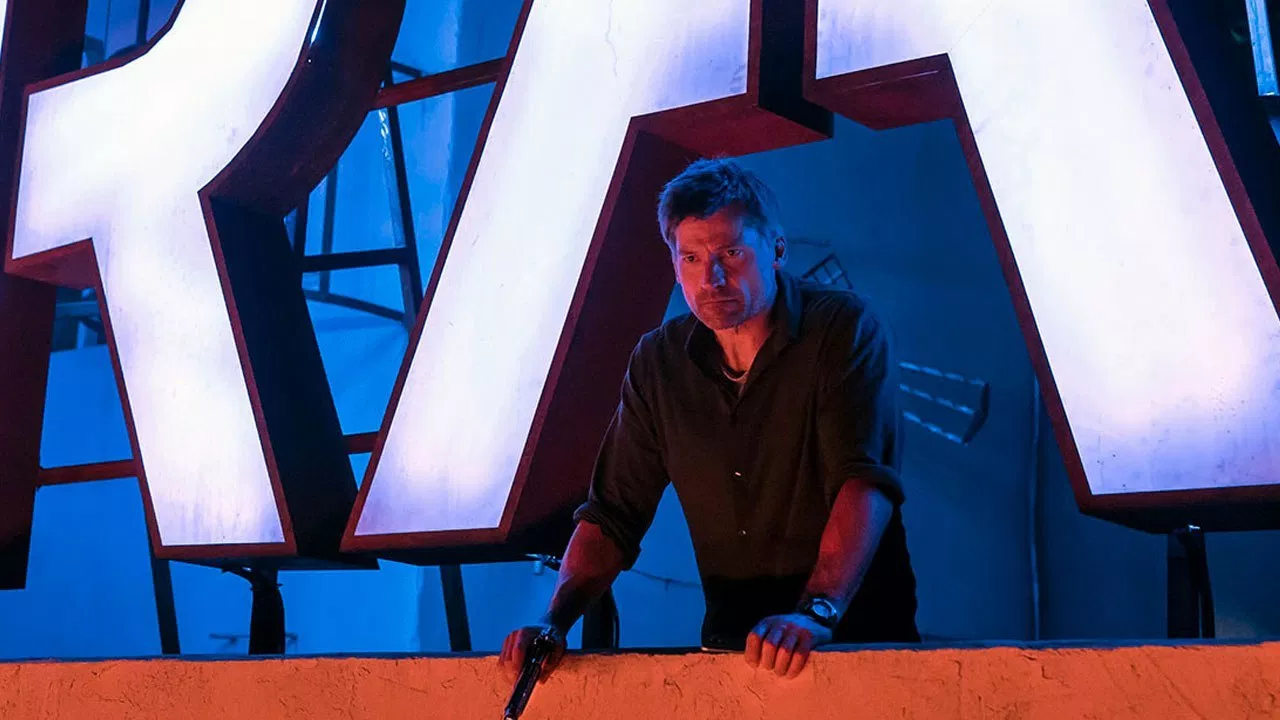
"For the first time in Italy," states the article, "the entire world of the film industry is united in a compact way to team up and relaunch cinema as a form of cultural entertainment throughout the year. Distribution companies will guarantee the programming of spectacular and quality cinema from January to December, without interruption, with theaters open twelve months a year. The institutions will make a contribution to supporting the initiative."
While Moviement began this past Christmas season (2018) and will run all through the year, the summer season offers a great marketing opportunity for the project. "The distributors, from the majors to the independents, all the exhibitors, from the art rooms to the multiplexes, the producers, the institutions and the talents, move together for the first time and are coordinated," the article states. "The first objective is to create the summer market starting in 2019 with a three-year plan that aligns Italy with the rest of the world with a cinema active 12 months a year."
While the article adds that the list of summer films included will be enhanced once the entire upcoming Cannes line-up is announced, it seems there may still be an opportunity for Domino to have its world premiere at Cannes, either in or out of competition... sounds crazy, perhaps, after all the speculation a year ago, but it remains, for the moment, a film unseen.
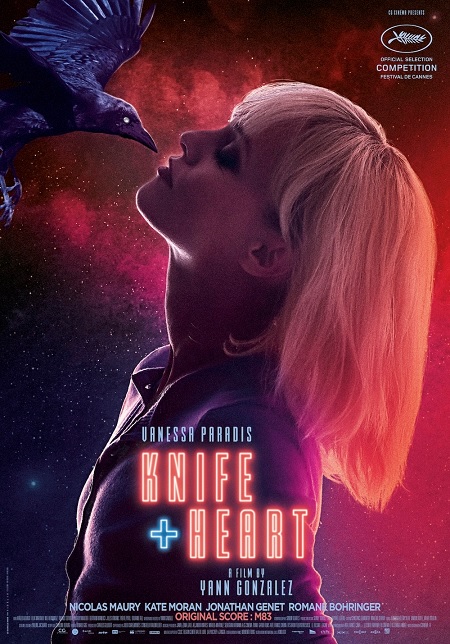 Last October, Knife + Heart director Yann Gonzalez told Film Inquiry's Hazem Fahmy that he showed Brian De Palma's Phantom Of The Paradise to actor Jonathan Genet, in preparation for his role in the film. Now, Gonzalez tells Kyle Turner at Filmmaker Magazine that he gave star Vanessa Paradis a DVD of De Palma's Blow Out, among others, to give her an idea of the style of acting he was going for:
Last October, Knife + Heart director Yann Gonzalez told Film Inquiry's Hazem Fahmy that he showed Brian De Palma's Phantom Of The Paradise to actor Jonathan Genet, in preparation for his role in the film. Now, Gonzalez tells Kyle Turner at Filmmaker Magazine that he gave star Vanessa Paradis a DVD of De Palma's Blow Out, among others, to give her an idea of the style of acting he was going for:Filmmaker: Did you do any kind of preparation with Vanessa Paradis before shooting?Gonalez: Not really. Vanessa needs to be on set to really feel her character. We met several times before though, often with Kate Moran and Nicolas Maury, but it was more like a way to get to know each other. The only thing I did is to offer her some DVDs in order to help her understanding the kind of acting I had in mind for Anne. Possession by Zulawski, Neige by Juliet Berto, Blow Out by Brian De Palma: very intense, sometimes over-the-top performances, more cinematic than realistic. The blonde hair, green raincoat and red boots did the rest!
In the galaxy of favorite influences that guide you and that you often quote (Werner Schroeter, Paul Vecchiali, R.W. Fassbinder…), this film brings to light a new figure: Brian De Palma.My co-writer and I share a great passion for De Palma; this is a common thread that has clearly led us both. In terms of emotional thrillers, De Palma is the king, with films such as Carrie, Blow Out, and Dressed to Kill.
These are also the first films I showed my producer, Charles Gillibert, to demonstrate to him in what direction I wanted to take Knife+Heart, proportionally speaking, of course. De Palma has this unabashed, playful side, weaving constantly between fiction, reality, the cinema, fantasy, and voyeurism.
He also has an absolute love of the cinema. Knife+Heart starts with a 16mm editing table and finishes up on a sort of stellar “projection”… The love of the matter that makes up cinema itself is very much present. A cry of love and rage is etched into the actual film with a knife and is only visible once it’s been through the viewer… I really liked the idea that a woman’s desperate love situation could slip its way onto the film itself.
How did you profile the 70s treatment? The film never falls into the “period film” cliché, it’s much more subtle than that.
I was really worried about it looking like an academic reconstruction, and with my Director of Photography, Simon Beaufils, we very quickly got the idea of working using light to work on the period. Today, all Paris streets are lit using sodium lighting, which gives a horrible yellowy-orange light. So we strived to find the blue-green neon glow of French films from the late 70s / early 80s. Obviously there was a lot of very important and precise work on costumes and settings but, above all, I didn’t want a film that would look outdated. It also had to be able to talk about today’s world using faces and bodies from today. That’s why I called on iconic figures of present-day nightlife, such as Simon Thiébaut who plays Dominique, the head of the transgender gang; or the choreographer for the club scene, Ari de B, who came on set with all his dancers. There’s something very contemporary that shines out through our fantasy 1979 Paris.
Color is extremely present and particularly flashy. It has strong visual presence…
The film shows messed up, euphoric characters, and I wanted a visual portrayal of the inner quandaries they are struggling with. I didn’t want to shy away from going deep inside their minds and extracting images. I love this idea of embracing experimental practices and bringing them into slightly more mainstream cinema, even if I’m aware of the fact that I don’t make the most mainstream films in the world (laughs)! There’s a whole “fringe” that has nurtured my love of the cinema and I want to bring that into my universe, make it more visible. I’m thinking for example of Paul Sharits’ films that used strobing to give a flicker effect to images and I picked up on that to portray the killer’s negative image “memories”.
How did you go about working on the music with your brother, Anthony Gonzalez? What desires guided you in this particular project?
We wanted to recapture the Gialli ambiance of the 70s, to feel that sinister yet sentimental tone. But we also needed to distance ourselves from that in order to create something contemporary, and not find ourselves in a pastiche of the genre and its music. Faithful yet unfaithful at the same time… We are both poetical and even sentimental, in a certain way. We wanted to dive in headlong, particularly as melancholy and poetry are found in numerous 70s horror film sound tracks, from films by Lucio Fulci to those by Mario Bava – I’m thinking in particular of the harrowing sound tracks of Don’t Torture a Duckling or Twitch of the Death Nerve.
And here again, this principle of pleasure came rushing back: I got Anthony to listen some old sound tracks from straight and gay porn films. He quickly gathered the musical codes and finally, the most beautiful tracks in Knife + Heart the most pleasurable ones, are probably the ones he recreated for the film’s fake porn movies.
For this sound track, Anthony worked once again with Nicolas Fromageau, who he’d already worked with on the first two M83 albums and who’s a childhood friend. For the three of us, there’s something about Knife+Heart that’s strongly linked to our teenage years and the films that fostered our love of cinema.
The films I liked as a teenager were a little more “strange”. My brother is four years younger than me and he told me a few years after the fact that he and Nicolas used to sneak into my bedroom in Antibes to watch my videos by Jodorowsky, Richard Kern and Jean Rollin… And they were quite marked by that! The sound track to Knife+Heart was a way for Nicolas, Anthony and I to come back to our first loves, our first powerful images and sensations from the cinema.
How did you deal with shooting the porn scenes? They’re extremely suggestive, but you don’t actually see anything head-on.
I didn’t want the sexuality to veil Anne’s tragedy, her adventure, which for me is the film’s backbone. It’s first and foremost the portrait of a woman and it just so happens she produces porn films. We kept all the imagery and the substance and had great fun with that but without showing the coarsest of images because to top it off, that’s not what I retain from porn films of the period. I wanted to come back to a sort of innocence and naïveté that you saw in the first porn films. It was before AIDS came on the scene and there was an obvious enjoyment in playing together, and taking pleasure together and some films even mixed heterosexual and homosexual sex scenes. Nicolas Maury dealt really well with this playful aspect in the fantastic way he has of playing with genders, identities, and even his own femininity when he portrays a transgender version of Vanessa in several scenes.
It was important to make these scenes moments of comedy and to bring a certain joy into the sex. The aim was to make the viewer want to be a part of things. I think that a young heterosexual male could quite easily want to live within the film. For me it’s a much more important gesture, and much more political than showing sex scenes in order to shock the middle class… who aren’t actually shocked by much and haven’t been in a very long time!
In any case, your cinema contains more of an erotic element rather than veritable pornography.
For me, cinema is ontologically erotic. We mentioned De Palma a little earlier. We could also have mentioned Verhoeven, Argento, Fulci and dozen other great or lesser masters who aren’t so well known. I miss that subversion in today’s cinema. Sexuality cuts through feelings; it’s part of what forms a person, part of his or her story. Anne is tormented by her sexuality, through her work but also because of the way she loves. The use of voyeurism inherited from De Palma recurs throughout the story: Anne spies on her editor through a spyhole; two boys are spied on by one’s father as they have sex… It’s something that is repeated throughout the film. There’s a very erotic desire that isn’t mine, it belongs to the film itself, to its very essence. We’re in a time of regression and puritanism that I wanted to go against whilst recapturing the lifeblood of cinema.
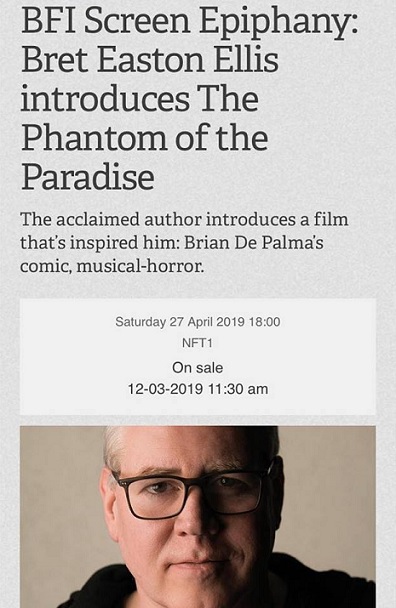 Bret Easton Ellis will be the special guest at a Deeper Into Movies screening at BFI Southbank in London on April 27th. "He's picked the amazing Brian De Palma movie Phantom of The Paradise (1974) to screen," reads a Deeper Into Movies Facebook post about the event. After the screening, Ellis will sign copies of his new book White.
Bret Easton Ellis will be the special guest at a Deeper Into Movies screening at BFI Southbank in London on April 27th. "He's picked the amazing Brian De Palma movie Phantom of The Paradise (1974) to screen," reads a Deeper Into Movies Facebook post about the event. After the screening, Ellis will sign copies of his new book White.De Palma’s self-aware voyeuristic relationship to not only his female characters, but the medium itself, like Hitchcock’s, was what gave his films a jolt, and made his films so endlessly fascinating, and complicated, as well as how technically facile and inventive De Palma dealt with the medium itself. De Palma’s perversity in staging violence was witty and very cinematic. I can’t think of a moment of realistic violence in a De Palma film… the stabbing in Sisters, the pig’s blood and the massacre at the prom in Carrie, Fiona Lewis spinning to her death, midair, and John Cassavetes exploding in The Fury, the elevator slashing in Dressed To Kill, the chainsaw sequence in Scarface. And all of this done on a grand scale that will never be replicated in movies again. Yes, this was the 1970s when De Palma started making a string of great films, with Carrie probably being his go-to masterpiece, and one of the key films of the New Hollywood. Though with each successive viewing of De Palma’s 1981 John Travolta conspiracy thriller, Blow Out, I’m not totally positive about that anymore. Though Blow Out is Quentin Tarantino’s favorite movie. My own personal faves from him remain Phantom Of The Paradise and Dressed To Kill, where the killer is a tormented, pre-op transexual. Oh my God, oh my God, I just heard the Teen Vogue staff self-immolating......There’s only one medium shot of Brian De Palma talking that we return to throughout the documentary, in the same room, in the same blue shirt, but the majority of the movie is a brilliant and seamless array of clips from De Palma’s movies, and it is a visually overwhelming experience. I had not seen some of these images on a big screen in decades, and I was in awe. Oh, my God, movies used to look like that. De Palma says at one point about him and Spielberg and George Lucas, and Coppola and Scorsese, the directors who led the New Hollywood revolution in the 1970s, that this kind of moment, this auteurist freedom played out within the studio system, with directors making films for adults, will never return. And it reminds us that it was over almost before it began. De Palma reminds us that it wasn’t Jaws or Star Wars that ended the New Hollywood (aesthetically, they are examples of it), it was actually (as John Carpenter pointed out a couple of weeks ago) the failure of one of the grandest auteur movies ever made by a studio, Michael Cimino’s Heaven’s Gate, that closed the door on an era. I don’t want to be a nostalgist, and neither does De Palma, but I feel a deep sense of loss comparing the movies then with the movies now.
The first annual Sleepy Hollow International Film Festival will include a "special celebration" (or "special presentation") of Phantom Of The Paradise. The fest runs October 10-13, 2019, in Sleepy Hollow, New York. With the event still months away, we'll keep an eye out for any updates on potential guests for this one.
In the meantime, here is a list of upcoming Phantom Of The Paradise events this year::
March 20, in Paris: Laurent Vachaud presents Phantom Of The Paradise, followed by a debate and a cocktail
March 23, in Chicago: Gerrit Graham to present 45th anniversary screening of Phantom Of The Paradise at Sci-Fi Spectacular
March 29, in Lyon: Brian De Palma Masterclass followed by screening of Phantom Of The Paradise at Lumière Institute
April 27, in London: Bret Easton Ellis introduces Phantom Of The Paradise, a film that inspired him, at BFI Southbank
May 3, in Winnipeg: “Phantom Rocks The Park” with 45th anniversary screening at the Park Theatre followed by a live soundtrack performance by Swanage
October 10-13, in Sleepy Hollow: The first annual Sleepy Hollow International Film Festival will include a special celebration of Phantom Of The Paradise.
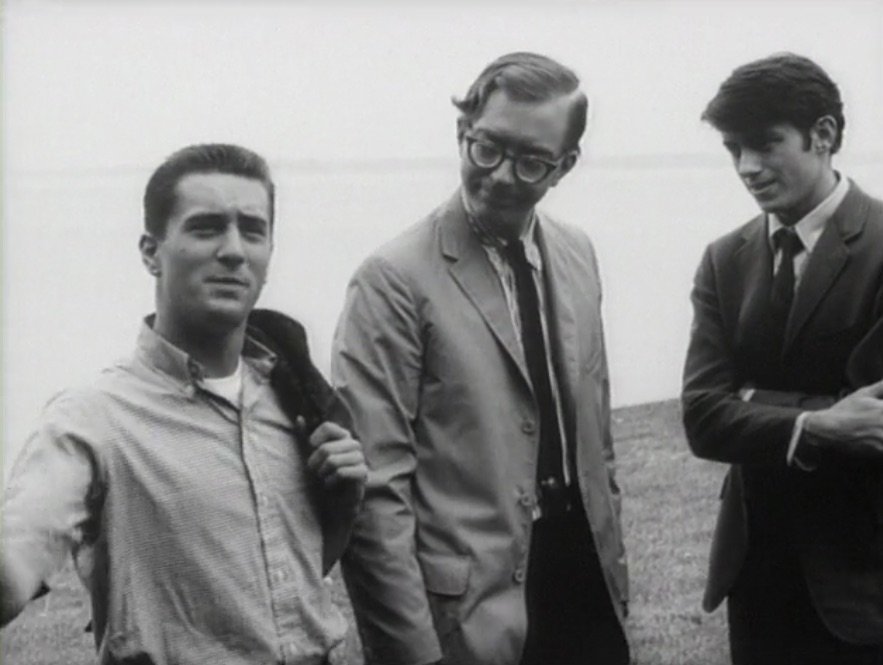
"Young Clayburgh too, don't forget," O'Malley responded back. "She's one of my favorite actresses. I think it's funny and ridiculous!" In three followup tweets, O'Malley added, "Ponderous pompous minister, taking bride and groom aside to give them advice on marriage, and ends up babbling about miniature golf, trying to extend the metaphor, and failing. I saw this a million years ago - then saw it was streaming on Amazon. Bizarre! What's most interesting is seeing De Niro before he knew who he was as an actor. Trying to be jovial/one of the guys - which is the character. It's just not right for him - already. He knows it now but he didn't then - but still, he tries, b/c that's the gig. It's very touching."
In another response, O'Malley's fellow RogerEbert.com critic Peter Sobczynski mentioned that The Wedding Party is included on Arrow's recent De Niro/De Palma box set.
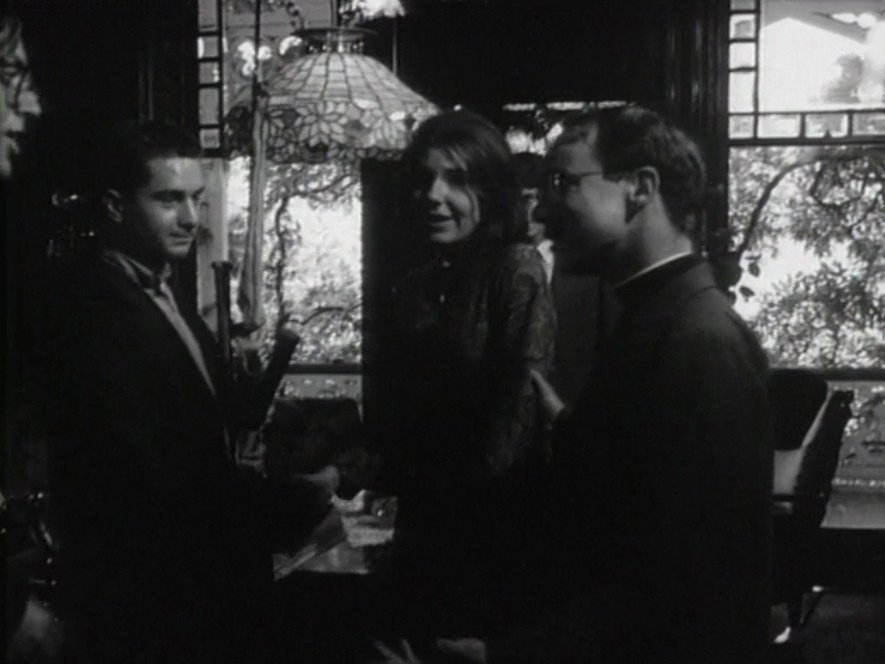
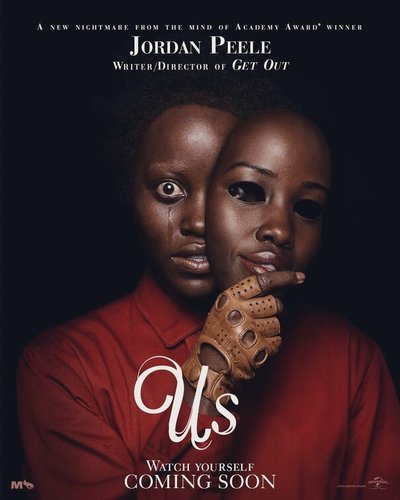 "I want to do what Hitchcock did, what Spielberg did, what Brian De Palma did — dark tales," Jordan Peele told an interviewer on the red carpet at last year's Academy Awards. His second feature as writer/director, Us, premiered at the SXSW Film Festival yesterday in Austin, Texas, and early reviews popping up are mentioning Brian De Palma and other filmmakers. Yet each review also stresses that while Peele might wear those references on his sleeve, the bold vision behind the film is uniquely his own. A couple of the reviews mention De Palma in specific relation to a standout split-diopter shot Peele uses in Us. However, Peele is surely familiar with Steven Spielberg's use of split-diopters in Jaws, as well-- one of these reviews mentions that the boy in Peele's film wears a Jaws T-shirt. Here are some excerpts:
"I want to do what Hitchcock did, what Spielberg did, what Brian De Palma did — dark tales," Jordan Peele told an interviewer on the red carpet at last year's Academy Awards. His second feature as writer/director, Us, premiered at the SXSW Film Festival yesterday in Austin, Texas, and early reviews popping up are mentioning Brian De Palma and other filmmakers. Yet each review also stresses that while Peele might wear those references on his sleeve, the bold vision behind the film is uniquely his own. A couple of the reviews mention De Palma in specific relation to a standout split-diopter shot Peele uses in Us. However, Peele is surely familiar with Steven Spielberg's use of split-diopters in Jaws, as well-- one of these reviews mentions that the boy in Peele's film wears a Jaws T-shirt. Here are some excerpts:On its outermost surface, Us is an effective survival horror thriller in the vein of The Strangers, featuring phenomenal performances from all involved. Tim Heidecker and Elisabeth Moss make a decadent meal out of their supporting parts as friends of Gabe and Adelaide, but Nyong'o's performance rules them all with a transcendent duality that demands repeat viewings.As with Get Out, Peele recontextualizes his influences into strong aesthetic choices; the opening credits sequence – a slow zoom out from the eye of a caged rabbit, revealing it as but one of many – evokes the cerebral horror of Brian De Palma and David Cronenberg. In particular, the influence of the former's Sisters and the latter's preoccupation with the body/self as foreign object are apparent throughout. Us is so layered in meaning it may as well be an immersive experience; a metatextual funhouse mirror akin to the one young Adelaide encounters in her early flashback. It's a film about mental illness and a film about trauma and PTSD. It's a film about imposter syndrome and never quite feeling as though you've earned the things you have or the people who love you. It's a film about our country, as Adelaide sharply observes that these "others" are Americans – and we are our own worst enemy, just lying in wait for the moment when we can easily topple our own lives and all we've built around them.
It's a film about the part of ourselves that we hate the most; the weak, needy part that's all unseemly desire and craven id; the part that we refuse to acknowledge because it is the absolute worst of us, or so we think. What if you ignored that part of yourself and refused to nourish it, but it found a way to grow in the shadows? What if it found a way to feed itself, and learned to approximate your movements and sounds? What if it got out? Imagine being confronted by this existential concept made feral reality; imagine the reckoning.
If the opening scenes are deliberate, once Us gets going, it goes; the efficiency of the turn is striking, as is the confidence with which Peele sets his scenes, moves his camera, and freaks us out. In scene after scene he creates a mood of offhand, everyday spookiness, and then turns the screw with genuinely disturbing imagery. The visual strategies foreshadow the identity of the invaders, each of whom seems a bizarro replica of a member of the family; Peele is constantly framing his characters in mirrors, glass reflection, and even, late in the film, a thematically appropriate De Palma-style split diopter shot. The cinematographer is Mike Gioulakis (his credits also include Glass and It Follows), and he spends much of the film, which is set mostly over one long night, playing with light and dark and dark skin, in backgrounds and shadows.The editing is sharp – there’s a suite of cross-cut one-on-one confrontations, once each of our protagonists meets their doppelganger, that’s sort of staggering – but Peele is always careful to give his actors their moments. (Elisabeth Moss has one, carefully applying lipstick in a mirror, that is absolutely chilling.) Every performance lands, thought Nyong’o has the movie star role, and plays it as such; her payoff moments deliver, but she’s unnervingly creepy when playing her character’s villainous half.
And yet, with all those virtues noted, Us can’t quite match Peele’s debut. Part of that is just a question of timing; Get Out is a terrific thriller that also arrived at precisely the right moment, in the morning-after hangover of a stupefying presidential election, and seemed a timely reminder of the evil that our smiling friends and neighbors are capable of.
But if Get Out was accidental Trump commentary, Us is decidedly deliberate, particularly in its third-act explanations and revelations, and when Peele preceded the SXSW screening by announcing, “the movie is about a lot of things,” he tipped his hand a bit – particularly in the opening stretches, there’s a fair amount of seemingly random setup and sheer oddity, bunnies under opening credits and vague on-screen text about underground tunnels and a lot of details about the 1986 Hands Across America project. Some of it pays off, but in a way that makes those elements feel like side scrawlings in a director’s notebook, plot points created to accommodate stuff he thought would be cool to throw into the movie, rather than growing organically from the material.
Get Out was the latter, and as a result, it was tight as a drum. Us is not that, which isn’t entirely a criticism. Such ambition – a sophomore filmmaker grasping to make a big statement, and fumbling a bit in the process – is not only forgivable, but admirable. Ultimately, he’s hoping to provoke thought, self-examination, even anger.
“My favorite thing is the idea that people will leave ready to have a conversation with whoever they’re with,” Peele explained in the post-screening Q&A. “I have a very clear meaning and commentary I’m trying to strike with this film, but I also wanted to design a film that’s very personal for every individual.
“In the broader strokes of things, this movie is about this country. And when I decided to write this movie, I was stricken by the fact that we are in a time where we fear the other. Whether it is the mysterious invader that we think is gonna come kill us and take our jobs, or the faction that we don’t live near that voted a different way than us… we’re all about pointing the finger. And I wanted to suggest that maybe the monster we really need to look at has our face. Maybe the evil is us.”
As he did with “Get Out,” Peele pays significant tribute to the films that have influenced him in “Us.” Though this time, there doesn’t seem to be a consensus, as I spoke with others who saw the movie, we focused on different titles that stood out to us. For me, “The Shining” looked to be the film that received the most nods in “Us,” including an overhead shot of the Wilson family driving through hilly forests to their vacation home, much like the Torrance family does on the way to the Overlook Hotel. There’s also a reference to “The Shining” twins, a few architectural and cinematography similarities and in one shot, Nyong’o charges the camera with a weapon much like Jack Nicholson menacingly drags along an ax in a chase. However, “Us” is not just a love letter to one horror movie. Peele also pays tribute to Brian De Palma with a split diopter shot that places both Adelaide and her doppelgänger in equal focus for the first time in the movie. There’s also a tip of the hat to Darren Aronofsky’s “Black Swan” in terms of dueling balletic styles and a gorgeously choreographed fight scene that looks like a combative pas de deux.
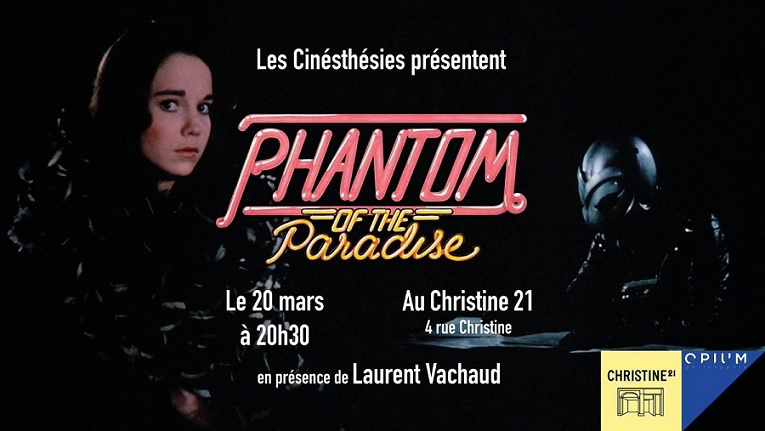
One week later, on March 27th, Blumenfeld will himself be at the Lumière Institute in Lyon, France, to present a De Palma double feature as part of a running De Palma retrospective: Blow Out and Body Double. And then two nights later, on March 29th, De Palma will be at Lumière to present a Masterclass, which will be followed by another screening of Phantom Of The Paradise.
More to come-- Phantom is all over the place for its 45th anniversary this year...
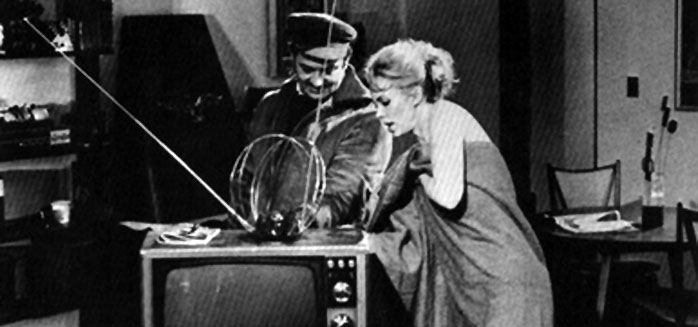
(Director Brian De Palma) ended up not liking me. I was very naive and not very courageous. There was a scene in a bathtub, which was cut out of the movie, where he wanted me to be nude. I didn’t want to do it. It was all improvised. He wanted me to improvise sexual fantasies ... in a bathtub … with bubbles … in the nude. It seems strange today, because actresses will do anything to get successful. But I was way too shy and way too inexperienced to come up to his standards. I couldn’t do it.He was a brand new director. He was treading water, too. He asked us to improvise these scenes, ‘You guys just talk,’ which is hard to do when you’ve been learning lines for however long I’d been acting. I didn’t know how to do it.
I've been asked that so many times because the women's movement had begun. Looking back historically, Angelique was one of the earliest strong women characters portrayed on television. She was really the first “Bitch Witch” that became so popular later. But at the time I wasn't aware of being any kind of social figure. I just felt that I had a good part and I was happy to have a job and go to work and be an actress. It's a gift. But I certainly didn't see myself in the larger sense of being any kind of a social influence.I think it's rare to pick up on that in the moment. I think only looking back I see that I was actually fortunate to be, in a small sense, one of the movers and shakers in the women's movement.
I see you as more than that. I happen to be a big Brian De Palma fan and you were also part of the New York City independent film revolution. At the time, were you aware of how different Hi Mom! was from the Hollywood machine?
Well again, no. Brian De Palma cast me and they actually put in my two children. He was doing improvised theater. We were improvising on film, without lines, without a character to play. It was a whole different thing and I actually was not very good at it. But, yeah, I was aware that there was an experimental film movement, very much so, yes. It was actually very politically focused.
Hi Mom! has some kind of show [in] it called Be Black Baby where the people were all dressed up in black face. I was very young and I wasn't really very aware of what Brian De Palma was trying to do. He was young too. He was experimenting but he went on to do some wonderful films.
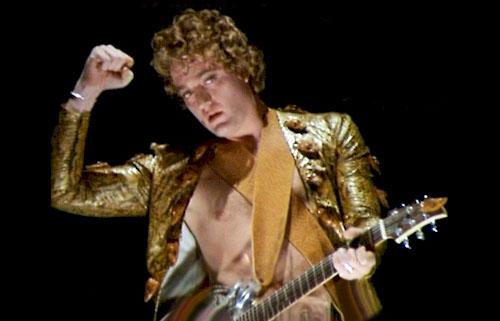 Gerrit Graham will be a special guest at Sci-Fi Spectacular in Chicago to present a 45th anniversary screening of Brian De Palma's Phantom Of The Paradise on March 23rd. The 14-hour event will take place at the Davis Theater, with tickets being sold for $30 plus service fees. Other films announced for the Sci-Fi Spectacular so far include Tim Burton's Mars Attacks!, Paul Michael Glaser's The Running Man, Stephen Herek's Critters, and Boris Sagal's The Omega Man.
Gerrit Graham will be a special guest at Sci-Fi Spectacular in Chicago to present a 45th anniversary screening of Brian De Palma's Phantom Of The Paradise on March 23rd. The 14-hour event will take place at the Davis Theater, with tickets being sold for $30 plus service fees. Other films announced for the Sci-Fi Spectacular so far include Tim Burton's Mars Attacks!, Paul Michael Glaser's The Running Man, Stephen Herek's Critters, and Boris Sagal's The Omega Man.